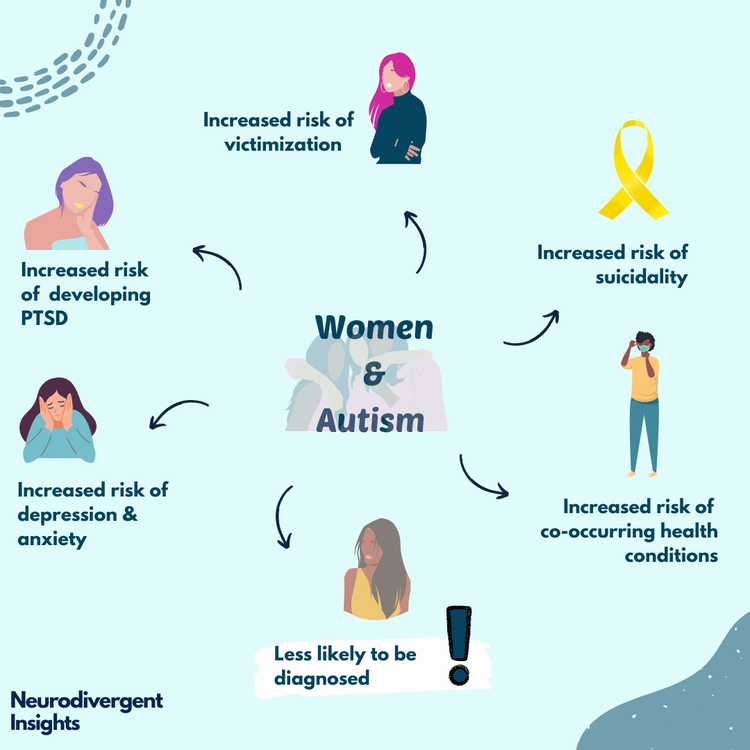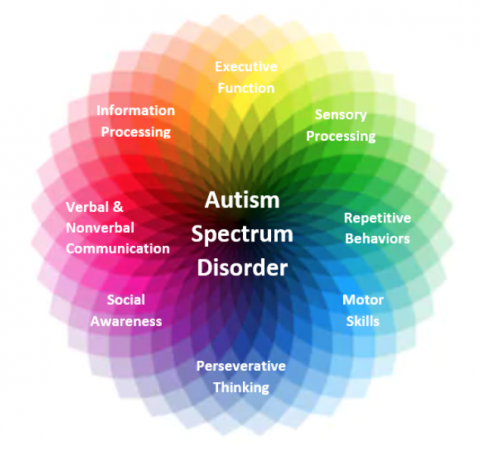Browsing Social Obstacles: Tips for People Living with Autism
Wiki Article
Exploring Autism: Methods for Reliable Interaction and Communication
Effective communication and communication with people on the autism range necessitate an extensive understanding of their special demands and preferences. Strategies such as utilizing clear language, making use of visual supports, and fostering consistent routines can dramatically boost involvement and lower anxiety. Recognizing the value of non-verbal hints and shared rate of interests leads the method for purposeful links. Nonetheless, the intricacies of these methods expose additional factors to consider that warrant expedition, specifically in just how they can be adapted to diverse contexts and private experiences. What might these adaptations appear like in method?Comprehending Autism Range Disorder
Autism Range Disorder (ASD) includes a variety of neurodevelopmental problems characterized by difficulties in social communication, communication, and recurring behaviors. The term "range" mirrors the diverse symptoms and differing degrees of intensity experienced by individuals with ASD. While some may show significant problems, others might show high-functioning attributes, permitting better independence in day-to-day live.The start of ASD usually takes place in early youth, with indicators frequently identifiable by age 2. Early indicators might include delayed speech advancement, limited eye get in touch with, and problems in recognizing social cues. The exact etiology of ASD continues to be unclear, study recommends a combination of genetic and environmental variables plays an essential function in its advancement.
As an outcome, treatments and support customized to specific requirements are vital for promoting communication and social skills. Identifying the complexity of ASD is vital for advertising understanding, acceptance, and effective methods that help with meaningful communications with individuals on the range.

Significance of Clear Communication
Effective communication is vital for fostering understanding and connection, particularly for people with Autism Range Problem (ASD) Clear interaction not just facilitates social interactions yet additionally boosts the individual's ability to share their ideas, feelings, and requirements. For people with ASD, the subtleties of language can typically be challenging; therefore, using uncomplicated and unambiguous language is necessary.Furthermore, clear communication aids minimize irritation and stress and anxiety that might arise from misconceptions. When messages are communicated in a straight and regular way, individuals with ASD are much better equipped to translate info precisely, which can considerably boost their social engagement and involvement in various setups.
Establishing routines and making use of visual assistances can further boost clear interaction. These techniques give individuals with foreseeable structures that aid understanding and retention of details. Additionally, proactively being and listening person during communications advertises a supportive atmosphere where people with ASD really feel valued and understood.
Eventually, focusing on clear interaction not only equips people with ASD but likewise cultivates more significant links with their peers, caregivers, and the larger area, leading the way for comprehensive communications and collaborative relationships. - autism
Non-Verbal Communication Methods
Interaction expands past words, and for people with Autism Spectrum Condition (ASD), non-verbal hints play a substantial duty in interactions. Non-verbal communication techniques can include face expressions, motions, body movement, and eye call, every one of which act as vital components for conveying objectives and emotions.Understanding and interpreting these non-verbal signals can enhance interactions with individuals with ASD. For example, a cozy smile or open visit homepage pose can produce a welcoming environment, motivating interaction. Utilizing visual help-- such as image cards or signs-- can bridge communication spaces and help convey messages extra successfully.
It is likewise essential to be conscious of personal space, as people with ASD may have different convenience levels concerning proximity. Observing their responses to physical nearness can inform ideal modifications.

Producing Supportive Environments
Developing an encouraging atmosphere is important for fostering positive communications and improving the health of people with Autism Range Condition (ASD) Such settings can dramatically reduce stress and anxiety and produce a feeling of security, allowing people to reveal themselves more openly.To accomplish this, it is important to consider sensory level of sensitivities that individuals with ASD might experience. Modifying the physical room to include soft lighting, very little background sound, and comfortable seats can create a relaxing environment. Additionally, utilizing consistent regimens and clear aesthetic routines can help people anticipate changes and minimize unpredictability, additional advertising comfort.
Social spaces must be structured to reduce overwhelming stimulations while giving chances for involvement in preferred tasks. Facilitating locations about his assigned for silent time can also function as a haven during moments of stress and anxiety. Importantly, integrating components of choice equips people, allowing them to exercise company in their setting.

Urging Social Interactions
Cultivating social communications among people with Autism Range Problem (ASD) needs intentional methods that prioritize convenience and involvement. Developing foreseeable routines can help in reducing anxiousness, making social settings extra approachable. Producing structured atmospheres with specified roles and duties permits individuals to engage without the frustrating pressure of unstructured social characteristics.Including rate of interests and toughness right into social activities can work as a stimulant for interaction. Arranging group activities around shared pastimes or subjects of attraction can facilitate natural conversations and links. Additionally, making use of visual supports, such as pictorial schedules or social scripts, can help in understanding social hints and assumptions.
Modeling proper social actions is vital - autism. Peers and adults must show efficient interaction strategies, including active listening and turn-taking. Role-playing scenarios can likewise supply a risk-free area for individuals to exercise these skills
Lastly, promoting peer connections with comprehensive techniques is vital. Motivating inclusive playdates or group outings can create opportunities for socialization in a try here comfortable setup. By applying these instructors, approaches and caregivers can considerably enhance social interactions for individuals with ASD, advertising their total social growth and well-being.
Final Thought
In verdict, reliable interaction and communication methods are necessary for supporting individuals with Autism Range Condition. Emphasizing clear language, incorporating non-verbal signs, and establishing foreseeable routines significantly improve engagement and minimize anxiety. Producing supportive atmospheres cultivates risk-free social communications, while encouraging shared passions helps with purposeful connections. Eventually, these strategies equip individuals with autism to navigate social landscapes, advertising their overall health and enabling the advancement of long-term relationships.Effective interaction and communication with individuals on the autism range demand a comprehensive understanding of their special demands and preferences. Clear interaction not just helps with social communications however additionally enhances the person's capacity to express their requirements, ideas, and feelings.Cultivating social communications among individuals with Autism Spectrum Condition (ASD) needs deliberate techniques that focus on comfort and interaction. By applying these teachers, caregivers and strategies can dramatically boost social communications for people with ASD, advertising their overall social development and health.
In final thought, efficient interaction and communication techniques are vital for supporting people with Autism Spectrum Disorder.
Report this wiki page